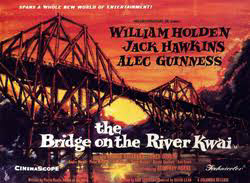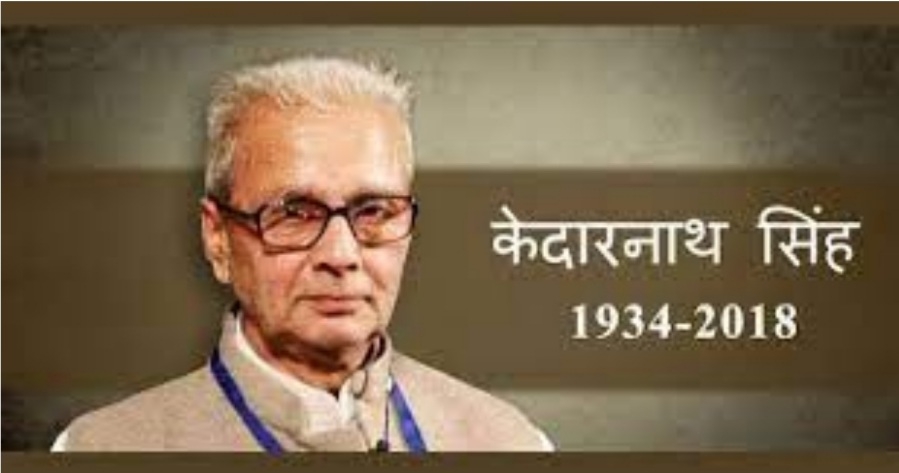THE MADMEN OF KWAI
INTRODUCTION
The surveying Eagle and its unparalleled vision acts as the establishing shot in the movie, The Bridge on the River Kwai. Most war movies are either for or against their wars. "The Bridge on the River Kwai" (1957) is one of the few that focuses not on larger rights and wrongs but on individuals (Ebert). The movie, directed by David Lean is based on the 1952 novel written by Pierre Boulle. Although there are historical elements reflected in the plot, most of the characters and events in the plot are entirely fictional. It stars prolific actors like William Holden, Alec Guinness, Jack Hawkins and Sessue Hayakawa. The Bridge on the River Kwai is widely regarded as one of the greatest films of all time. The seven academy awards in its name itself is a testament to the genius of the director and the plot. David lean elaborated on his process of writing in an interview given to BBC. He says “I try to imagine what the finished movie is going to look like on the screen”. This vision and creative genius made The Bridge on the River Kwai into one of the greatest films ever.
THE STOIC
The shrivelled-up prisoners of war and the ever-present surveillance give us a glimpse of war in its entirety. The losers in war are delegated to the position of slaves. Shears’s dialogue where he says, “As for me, I’m a slave. A living slave” is indicative of the hopelessness of the POW camp. The contrast in costumes suggests the wide gulf between the living conditions of the victors and the vanquished. The music is sudden. Rising. It resembles a marching band. But there is no triumph in their walks.
“Here lies…I forgot who we just buried”. This line speaks to us. The horrors of war are encapsulated in a single line of dialogue.
Epictetus, the stoic slave-philosopher once said “Freedom is the only worthy goal in life. It is won by disregarding things that lie beyond our control.” Nicholson in the beginning exemplifies this stoic spirit.
However, Saito is the direct antagonist to Nicholson’s stoic and unflinching demeanour. He says “all work and no play make Jack a dull boy” to bribe the English prisoners to comply and be happy with doing manual labour. But the stoic Nicholson however never yields to Saito’s compromises. Instead, he becomes a symbol of the unflinching stoic approach and achieves what he wants. Nicholson in many ways is out to prove that his way of conduct is more honourable and efficient. He calls it “Western Efficiency”. His pride makes him confident and stubborn. He wants to set up a conference with Saito to “Set him Straight”. It is possible to relate this personal mission of Nicholson as a “White man’s burden.” His actions are similar to “a duty formerly asserted by white people to manage the affairs of non-white people whom they believed to be less developed” (Merriam-webster). The Bridge on the River Kwai spends most of its considerable running time puffing up a romantic image of the British gentleman soldier, presenting an organised, highly capable military man who handles every situation—even time as a prisoner of war—with civility, decorum, and perseverance. Then the movie dedicates its final moments to detonating its own stiff upper lip (Larsen). This critical remark presents the movie as a glorification of the western spirit while pushing the Japanese honour and its ideals to the side-lines.
Nicholson’s intention in reality is not to merely build a bridge for the Japanese. It is to restore order and raise the morale of the soldiers under his command even when Clipton accuses Nicholson of “working with the enemy”. But Nicholson is adamant in his assertion that the Japanese can’t break them in “body or spirit.”
SAITO-HONOUR OR DEATH
Saito rules the POW camp like a dictator. He blatantly ignores the rules of conduct and mistreats war prisoners. He is the typical antagonist in the beginning. Saito is instrumental in the progression of the plot. The dynamic between Saito and Nicholson act as the crux of the first part of the plot even though it’s a war movie. Saito is never a one-dimensional villain. He is not evil for its own sake. Honour plays a big part in his character. The actions of Saito and his cruelty towards prisoners is because of his intention to uphold his own honour and complete the construction of the bridge. It is evident that Saito too, is in a fight to save his own life. The failure to construct the bridge would mean that Saito is honour-bound to commit “hari-kari”, the Japanese ritual suicide. We see him crying in his cabin as he is forced to concede to Nicholson’s demands. However, this longing of Saito to uphold his own honour meant that he would have to sacrifice his advantageous position and come to equal terms with Nicholson.
This internal conflict is brilliantly portrayed by the actor Sessue Hayakawa. However, the completion of the bridge by Nicholson brings out Saito’s human side. He isn’t the oppressor. He understands the common link he has with Nicholson. The common code of honour and dignity. We see this as he calls the bridge “beautiful’. Saito is also a victim of war in the end. The human cost of war is perfectly accentuated through the character of Saito.
DEFEAT INTO VICTORY
The story told through The Bridge on the River Kwai is a story of will and honour. It is a story of resistance and the fight for the personal agency of one man. The story also revolves around the desires of four men. Shears’s desire to escape, Nicholson’s steadfast desire to hold his agency, Saito’s desire to complete the construction of the bridge, and Warden’s desire to destroy the bridge. But the movie demonstrates the grim reality of war. The construction of the bridge, Saito’s iron-fisted rule, Nicholson's perseverance; everything is ultimately useless as the bridge is destroyed by Nicholson himself at the cost of several lives.
But the destruction of the Kwai bridge in many ways is merely material destruction. The bridge was a symbol for both Saito and Nicholson. Their honour was fulfilled. However, the actual building of the bridge itself is the heart of the story. Nicholson says “Here, in the wilderness, you have turned defeat into victory”. In the end, Nicholson is triumphant even in death as he destroys the bridge he built with his own hands. The film opens up to endless readings as it can also be said that Nicholson realises, he has been indeed siding “with the enemy” as we see him exclaiming “what have I done?” The destruction that happens at the end of the movie makes you question everything. The order and discipline of the marching British soldiers led by Nicholson eventually end in death. The whistling march was not a symbol of the British resolve, but their march towards their own graveyard. But, even in death and destruction, The Bridge on the River Kwai teaches its viewers the importance of perseverance and agency even in the face of adversity. Even in death, Nicholson was never a slave. He arrived at the camp as a soldier and died as a soldier. The character of Nicholson reminds one of another famous movie dialogue; “I guess it comes down to a simple choice, really. Get busy living, or get busy dying.
WORKS CITED:
Connors, Graham. “Honour and Madness | The Bridge on the River Kwai Turns 60.” HeadStuff, 11 Oct. 2017, headstuff.org/entertainment/film/the-bridge-on-the-river-kwai-turns-60.
Ebert, Roger. “The Bridge on the River Kwai Movie Review (1957) | Roger Ebert.” © Copyright 2022, www.rogerebert.com/reviews/great-movie-the-bridge-on-the-river-kwai-1957. Accessed 1 Mar. 2022.
“Film 88 Special - David Lean.” YouTube, uploaded by VHS Video vault, 3 Sept. 2015, www.youtube.com/watch?v=oYQjEphFXss&ab_channel=VHSVideovault.
Larsen, Josh. “The Bridge on the River Kwai | Larsen on Film.” Larsen On Film | Current and Archived Movie Reviews by Chicago-Based Film Critic Josh Larsen., 14 Sept. 2018, www.larsenonfilm.com/the-bridge-on-the-river-kwai.
Spiegel, Sam, et al. The Bridge on the River Kwai. Columbia Pictures Corp. Presents, 1957.
“White Man’s Burden.” The Merriam-Webster.Com Dictionary, www.merriam-webster.com/dictionary/white%20man%27s%20burden. Accessed 2 Mar. 2022.
“What I Learned From Watching: The Bridge on the River Kwai (1957).” YouTube, uploaded by Tyler Knudsen, 13 Oct. 2016, www.youtube.com/watch?v=cv2LWfZU_pQ&ab_channel=CinemaTyler.
-Yadu Krishnan.P





Comments
Post a Comment